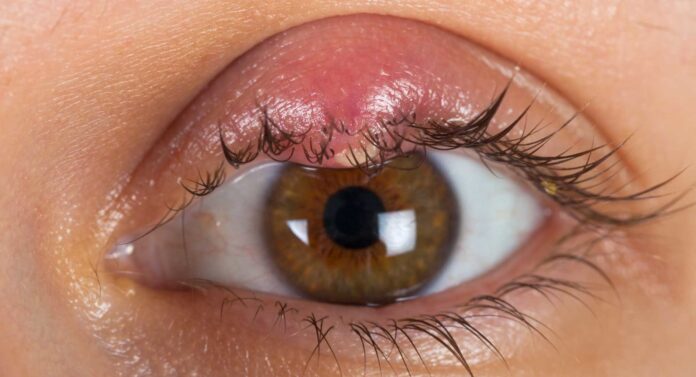While pimples are commonly associated with the face, it can be alarming to discover one forming near your eye. An eye pimple, also known as a stye or hordeolum, is a small, painful lump that develops along the edge of the eyelid or on the base of an eyelash. Although eye pimples are usually harmless and resolve on their own, they can cause discomfort and affect your vision. In this comprehensive guide, we will explore the causes, treatment options, and preventive measures for eye pimples, ensuring you have the knowledge to handle this common eye condition.
What Causes Eye Pimples?
Eye pimples are usually caused by a bacterial infection. The bacterium Staphylococcus aureus is the most common culprit. The infection typically occurs when bacteria enter the oil glands or hair follicles on the eyelids, leading to inflammation and the formation of a pimple. Other contributing factors may include poor hygiene, makeup residue, and rubbing the eyes with unclean hands.
Identifying the Symptoms of Eye Pimples
Recognizing the symptoms of an eye pimple is crucial for prompt and appropriate treatment. Common symptoms include:
- Red, swollen bump on the eyelid or lash line
- Pain and tenderness in the affected area
- Watery or sticky discharge from the eye
- Sensitivity to light
- Blurred or reduced vision if the pimple is close to the eye’s surface
Treatment Options for Eye Pimples
Most eye pimples can be treated at home, and they often resolve on their own within a few days. Here are some effective treatment options:
- Warm Compress: Applying a warm compress to the affected area for 10-15 minutes, several times a day, can help reduce inflammation and promote drainage.
- Gentle Lid Massage: After applying the warm compress, gently massaging the area can help release trapped pus and promote healing.
- Antibiotic Ointment: Over-the-counter antibiotic ointments can help fight the bacterial infection and speed up the healing process. However, avoid applying ointments directly to the eye.
- Avoid Squeezing: Resist the temptation to squeeze or pop the eye pimple, as this can worsen the infection and lead to complications.
When to Seek Medical Attention
In most cases, eye pimples resolve without medical intervention. However, certain circumstances warrant a visit to an eye doctor:
- Severe pain or persistent swelling
- Pimple does not improve after a week of home treatment
- Vision problems or increased sensitivity to light
- Multiple eye pimples or recurrent outbreaks
- Fever or other signs of systemic infection
Preventive Measures for Eye Pimples
Preventing eye pimples involves maintaining good eye hygiene and taking a few precautionary measures:
- Avoid touching or rubbing your eyes with unwashed hands.
- Remove makeup before bedtime and clean makeup brushes regularly.
- Wash your face and eyelids with mild soap and water daily.
- Avoid sharing eye makeup or personal eye care items with others.
- Replace eye makeup every few months to prevent bacterial growth.
- Do not wear contact lenses while you have an eye pimple to prevent further irritation.
Conclusion:
Eye pimples, while uncomfortable, are generally harmless and can be managed effectively with proper care and treatment. Understanding the causes, symptoms, and treatment options for eye pimples empowers you to take action when needed and promotes faster healing. However, if you experience severe symptoms or recurrent outbreaks, seeking medical attention from an eye care professional is essential to ensure your eye health is not compromised. Remember, practicing good eye hygiene and taking preventive measures can reduce the likelihood of eye pimples and protect your precious vision.















